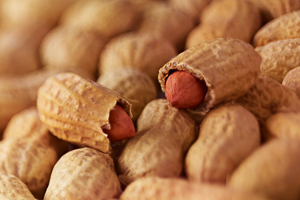High-Protein Foods for Wound Healing
Overview

Your body needs protein to help build and repair muscle, skin, and other body tissues. Getting enough protein also helps your body fight infection, balance body fluids, and carry oxygen through your body.
When you have a wound that's healing, think of food as medicine. Eat a balanced diet with enough calories and plenty of protein.
How much protein you normally need each day depends on your age, your sex, and how active you are. You may need to eat more protein to help a wound heal. Your doctor can advise you on the right amount of protein you need.
Examples of high-protein foods
High-protein foods include lean meat, poultry, and fish. You can also get plenty of protein from eggs, dairy and soy products, beans, nuts, and seeds.
The following tables list the amount of protein per serving size for a given food group.footnote 1
Meats, fish, and poultry (cooked)
|
Food
|
Amount
|
Protein (g)
|
|
Beef, ground
|
1 oz
|
7
|
|
Chicken breast
|
1 oz
|
8
|
|
Pork chop
|
1 oz
|
8
|
|
Salmon
|
1 oz
|
7
|
|
Tilapia
|
1 oz
|
7
|
|
Tuna, canned, drained
|
1 oz
|
5
|
|
Turkey
|
1 oz
|
8
|
Eggs and dairy
|
Food
|
Amount
|
Protein (g)
|
|
Cheese, cheddar
|
1 oz
|
7
|
|
Cottage cheese, low fat
|
½ cup
|
13
|
|
Egg, whole, cooked
|
1 large
|
6
|
|
Milk
|
1 cup
|
8
|
|
Yogurt, fruit, low-fat
|
6 oz container
|
8
|
Beans and soy products
|
Food
|
Amount
|
Protein (g)
|
|
Baked beans
|
1 cup
|
12
|
|
Black beans
|
1 cup
|
16
|
| Refried beans |
1 cup |
13 |
|
Soy milk
|
1 cup
|
6
|
|
Tofu
|
1 cup, cubed
|
18
|
Nuts and seeds
|
Food
|
Amount
|
Protein (g)
|
|
Almonds
|
½ cup
|
15
|
|
Peanuts, roasted
|
½ cup
|
21
|
|
Peanut butter
|
2 Tbsp
|
7
|
|
Sunflower seeds, shelled
|
½ cup
|
14
|
|
Wheat germ
|
2 Tbsp
|
4
|
References
Citations
-
U.S. Department of Agriculture (2019). FoodData Central. https://fdc.nal.usda.gov.
Credits
Current as of: December 4, 2024
Current as of: December 4, 2024
U.S. Department of Agriculture (2019). FoodData Central. https://fdc.nal.usda.gov.